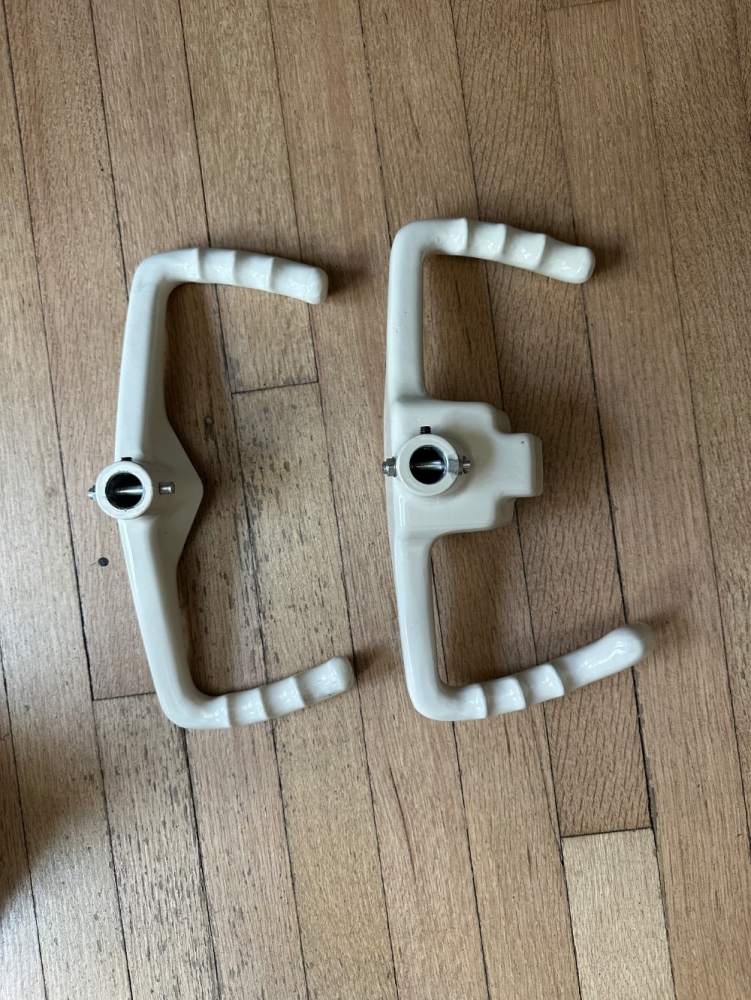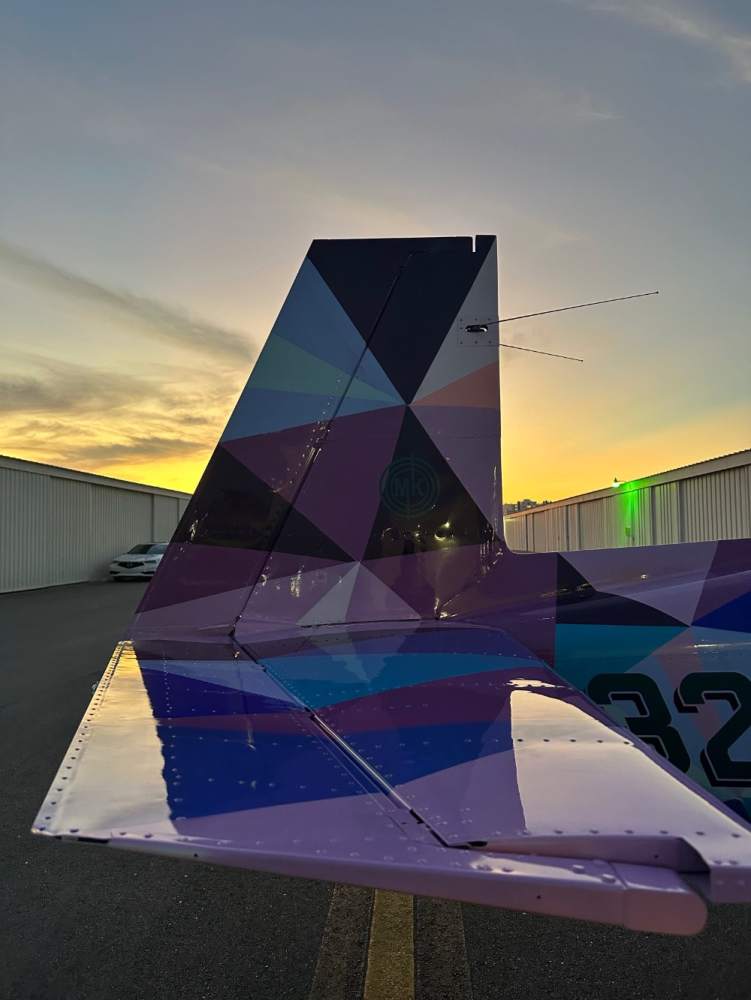-
Posts
79 -
Joined
-
Last visited
-
Days Won
1
Content Type
Profiles
Forums
Blogs
Gallery
Downloads
Events
Store
Everything posted by TheMooneyAnomaly
-
I wanted both a 650 and a 750, but was out of avionics budget by then, so I just went with the 355 instead of the 650 and/or 750.
-
Hi, Ross! The pics with the new panel show brand new Cygnet yokes which are the same as found in many Barons and Bonanzas. They make an adaptor for the different rod size and my IA took the necessary actions for compliance. Yes, planning to sell anything that came out of the panel and the old yokes - but important to read the details about the potential crack in the left side Mooney yoke that came out (above). Do not yet have any testing plan in place to determine if the old left side yoke is airworthy.
-
Yes, it is the curved line in that red circle. I'm not sure about the testing part but I can ask. We only have a few mx shops on field and they aren't huge. I was eager to get controls that have native support for modern electronic buttons, so once they pointed it out, I was happy to go shopping...
-
Hi, Don! I sure do. The left-side yoke has what appears to be a fracture in the metal where it mounts to the rod. I do not know the severity or depth of it. As a non-mechanic and not being a structural engineer, it did not look like much to me but the avionics shop didn't like it. I cannot comment on the condition of the PC cutoff valve as that system was disconnected prior to purchase. Happy to entertain an offer on these in their current condition and any of the stuff that came out of the panel. Note: Stratus transponder kit has already been sold.
-
Thank you! The Cygnet yokes are brand new and fantastic, so I will not be adding J yokes.
-
Bruce Jaeger himself came up and installed his "Spatial Interior" this past summer. The seat upholstery was custom made by Georges with Gemico, local here near St. Petersburg, FL. The carpet is from SCS.
-
Ha! Fortunately, it is just Montana 94 spray paint in shaker cans! 45 colors. Literally. The shop tested the paint on their base and below their clear several months ago. The paint is super thin and you cannot feel lines through the clear where the color transitions occur. Funny thing you mention Dali & Picasso - My home airport, KSPG Albert Whitted St. Pete FL, is immediately adjacent to the Dali museum - and the artist Matt Kress, when posting about this, quoted Picasso - "The world today doesn't make sense, so why should I paint pictures that do?"
-
Thank you!!!
-
Thank you! Very happy.
-
The right horn of the yoke is blocking a few switches (pitot heat and lights), left horn blocking some power related switches.
-
The FAR and Advisory Circular 45-2E were examined and this meets the requirements.
-
Hi, Friends! After a year of panel, interior, powertrain, and other updates, I have finally picked my 67 (68) M20F up from the final major planned maintenance - paint. Mural artist Matt Kress, in conjunction with Ace Aircraft Refinishing in Bartow KBOW, extended his artwork to an airplane for the first time. After a brief planning discussion, all artistic control was given to Matt... and one rule - I was NOT allowed to receive any visual updates (my idea). The 'unveiling' was this weekend and I could not be happier! Allow me to introduce "Anomaly."
- 74 replies
-
- 20
-

-

-
Hi, Glen! I just texted you from a 401 number about the tug. Still have it?
-
That one has been on my mind. This still irritates me. Why was flight #1 perfect? Switch tanks on ground just after start for flight #2. Could that have dislodged things, like someone noted earlier? I didn't make any aggressive moves and my takeoff was gentle... so I don't think it was uniquely capable of dislodging debris, compared to the prior flight. It will be interesting to get fuel contamination ruled in/out when we get the lab results. They do not tell us what is in the fuel, but they will tell us characteristics of the fuel vs. what it should be.
-
Quite possibly, but I suspect he was not watching. Unrelated note - He only took over servicing of this aircraft 2 weeks before the incident flight. His checklist now include inspecting for rust in steel components and inspection of every...single...screen. He is a very smart dude with an excellent memory... and clearly an honest person and person of integrity. He has my trust.
-
Mooney Family! I have some good news! The primary mystery is solved - the likely cause! When the engine was overhauled last year, the prior owner declined servicing the fuel system. That is one of the dominos in this chain. My mechanic, after a number of inspections at the engine area, began training from the fuel & fuel tanks-forward. Approximately in order: Fuel - out to the lab, awaiting word. Airframe fine mesh screen - no debris. Fuel selector/gascolator - No debris, clean screen, nothing out of the ordinary. Elbow before electric fuel pump - INTERIOR RUSTING Electric fuel pump - INTERIOR RUSTING Elbow after electric fuel pump - INTERIOR RUSTING Coarse screen filter after fuel pump - no debris Fine mesh screen inside fuel servo - BINGO. Significant amounts of fine rust particles, sufficient enough to significantly and variably reduce fuel flow. Combine this with the fact that we went to higher-flow air filter (PowerFlow Challenger K&N style) and higher-flow exhaust (PowerFlow) - increased air flow. Secondary mysteries are: Why was the prior flight ok? Total extent of damage. So it seems that this aircraft had sat with water at times and may not have been regularly sumped by the prior owner... who also saved several hundred dollars, leading to a situation that caused loss of effective engine function, potential loss of life, and significant costs. As my mechanic feels that he should have spotted this, he is covering all labor, cylinders, pistons, rods, bearings, bolts. I am voluntarily covering a couple overhaul items, noted below. Plan: Oil has been sent to the lab Oil filter paper portion sent to the lab Fuel from each tank separately sent to the lab Cyls 1 & 2 turning into trophies for the fireplace Cyls 3 & 4 going out for inspection Bearings being inspected right now. May be some marks in the babbit material. Replace mechanical fuel pump (precautionary) Overhaul electric fuel pump Inspect and replace all connectors and elbows that may contain rust Overhaul fuel servo (precautionary)
-
I just asked St. Pete Air avionics shop. Their reply: "The STC and Permission letter would be obtained by whoever is installing it. Typically this would be readily available for a vendor of the manufacturer, but I assume they can be obtained from Stratus." So maybe you can check with Stratus and/or an avionics shop.


.thumb.jpeg.7ba106fbf2b10cba03047ba965aecd84.jpeg)
























